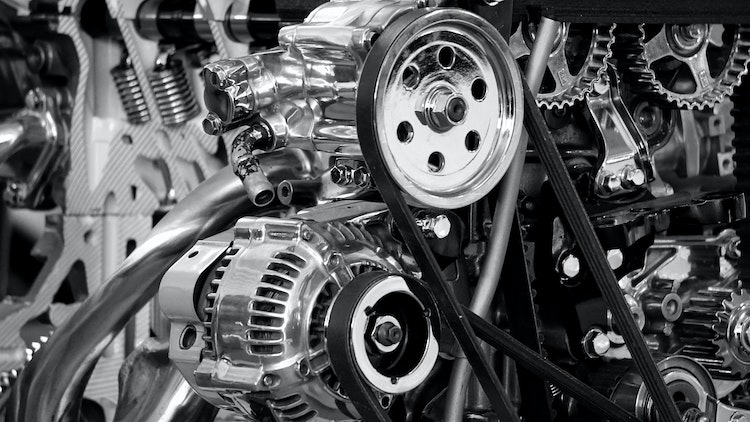

Take a moment to consider the following scenarios in relation to your vehicle:
- Does your temperature gauge rapidly turn hot when you start running the vehicle?
- Do you sometimes have steam or white smoke rising from your hood?
- Are there pools of bright yellow liquid under the front of your vehicle?
If you answered yes to any of the above questions, your vehicle’s cooling system is trying to tell you something. In this blog, we consider how your cooling system works and what can cause it to break down over time. We also review how to keep your cooling system maintained to avoid more serious engine problems.
How Does the Cooling System Work?
The cooling system is an extremely important function of your vehicle. Without the ability to cool the engine and its parts, your vehicle would experience total failure. Internal combustion engines generate a lot of heat from constant motion and friction. The cooling system is what helps regulate temperature and keep the parts from experiencing heat damage.
On a simple level, the cooling system performs in the following manner:
- A water pump circulates coolant fluid (mixture of water and antifreeze) through a series of hoses in your engine.
- As the liquid coolant passes through your engine, it draws heat from engine parts into the coolant.
- The coolant is then passed to the radiator (a type of heat exchanger), which cools the fluid and emits the resulting heat into the air and out of the engine.
- While this function is taking place, the cooling system thermostat is measuring the temperature and controlling a cooling fan for additional cooling and heat emission.
The cooling system is in continuous motion performing its tasks during vehicle operation as a way of regulating the temperature in the engine. So, what can cause a cooling system to stop functioning properly?
What Can Go Wrong with the Cooling System?
Even though your vehicle’s cooling system is designed to manage heat from within your engine, it can also be impacted by the heat itself. The biggest enemy of your vehicle’s cooling system is wear and tear, which is the result of extreme temperatures within the engine.
Some of the basic problems that you may encounter with your vehicle’s cooling system may include:
- Coolant Leaks: Constant heat along with wear and tear can cause the hoses and belts that circulate the coolant to crack, break, or become weak. Coolant leaks are a very common issue and are easily evident by pools of bright yellow liquid under the engine.
- Overheating: When coolant is not at the proper level, it is not going to cool the engine to the specified temperatures. Overheating is when the heat in your engine is not able to escape. Your cooling system may overheat because there is not enough coolant or there is failure of one or more of the cooling system components.
- Malfunctioning or Faulty Parts: The radiator fan can sometimes be faulty and stop working or you may have a cracked radiator. This will cause problems for your cooling system. Thermostats can also be damaged and not regulate the proper temperature, resulting in engine overheating. If a water pump stops working for some reason, it will not convey the coolant through the engine hoses.
While most drivers are guaranteed some type of cooling system problem during the lifetime of their vehicle, the good news is that there are ways to mitigate cooling system problems through regular and proactive maintenance.
Proactive Maintenance of the Cooling System
Your vehicle’s cooling system has many ways to alert you to a potential problem as stated in the opening questions. However, you can be proactive as a vehicle owner and avoid costly repairs by taking a few easy steps to maintain the cooling system:
- Inspect Parts for Wear and Tear: Once a year or every 12,000 miles, it is suggested that you visually inspect your cooling system for signs of wear and tear. That means looking over all belts and hoses and replacing ones that may be worn, cracked, or broken.
- Check the Level of Coolant: Make a habit of checking your coolant level and adding any necessary coolant to “top it off”. This is especially helpful at times when you may be taking a long road trip or in warmer conditions. If you keep an eye on the ground beneath your vehicle’s engine, you should be able to spot any leaking coolant. Coolant is a bright yellow color, with a sweet smell. If you see any pools of fluid, topping it off will not resolve the bigger issue of a leak. The cooling system should be checked for leaks.
- Perform a Coolant Flush: it is generally advisable to change all of your coolant when it becomes dirty or grimy. This is sometimes called a “coolant flush” which involves forcing clean coolant and water through the system to wash out any contaminants. This does not have to be performed as often and the general rule of thumb is about every five years.
- Check Your Radiator Cap: The radiator is a pressurized chamber and so it is important that the opening is closed tightly. A loose radiator cap has been known to be the culprit in an overheated engine. Make sure it’s on straight and tight.
If you feel that your vehicle might be telling you something about your cooling system, contact Car Kings in Wallington, New Jersey, today to schedule a vehicle inspection. We will advise you on any possible problems and make the necessary repairs and replacements to get your vehicle back up and running smoothly.
